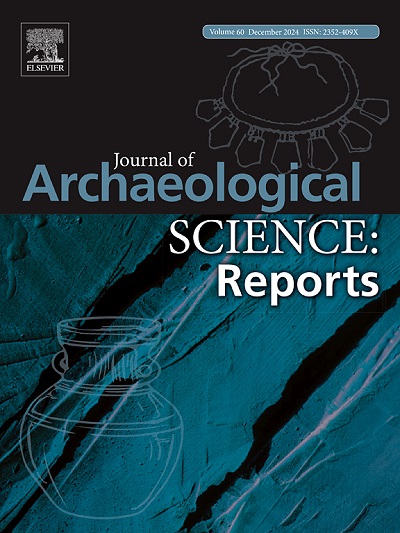Spatiotemporal patterns of obsidian exploitation in the later prehistory of eastern Kamchatka Peninsula (Russian Far East)
IF 1.5
2区 历史学
0 ARCHAEOLOGY
引用次数: 0
Abstract
Obsidian artefacts from archaeological sites in two regions of Kamchatka Peninsula were analysed by the XRF method (66 samples). The chronology of the cultural complexes was established by radiocarbon dating and the tephra layers as markers. The Least Cost Path (LCP) method was used to understand better the scale of obsidian exchange and the complexity of its transportation. It was found that obsidian from six primary sources was exploited by ancient sedentary natives of Kamchatka. The largest share (49.2 %) belongs to the KAM-7 source (Belogolovaya River, part of the Ichinsky cluster). The content of obsidian from other sources is 30.8 % for KAM-1, 9.2 % for KAM-3 (Itkavayam Volcano), 6.2 % for KAM-4, 3.1 % for KAM-2, and 1.5 % for KAM-5 (Payalpan Volcano). For cultural layers older than ca. 1650 BP, obsidian from all six sources was used; for cultural strata younger than ca. 1650 BP, four sources are identified. At the sites dated to the sixteenth − seventeenth centuries AD, obsidian from two sources was exploited. Based on the current and previous analyses of the provenance of obsidian artefacts, it is established that large-scale exchange networks existed on Kamchatka since the late Upper Palaeolithic (ca. 17,500–11,500 cal BP) to later prehistory (ca. 6800–400 cal BP), and finally until European contact. The results of LCP modelling demonstrate that obsidian was transported over a distances of up to ca. 300–400 km, and in some cases up to ca. 600 km, mainly by river valleys.
俄罗斯远东堪察加半岛东部晚史前时期黑曜石开采的时空格局
用XRF方法对堪察加半岛两个地区的考古遗址中的66件黑曜石文物进行了分析。以放射性碳定年法确定了文化复合体的年代,并以温层为标记。采用最小成本路径(LCP)方法,更好地了解了黑曜石交易的规模和运输的复杂性。研究发现,古代居住在堪察加半岛上的土著开采了六个主要来源的黑曜石。最大的份额(49.2%)属于KAM-7源(别洛格洛瓦亚河,伊钦斯基集群的一部分)。其他来源的黑曜石含量为:kam1为30.8%,kam3为9.2%(伊特卡瓦亚姆火山),kam4为6.2%,kam2为3.1%,kam5为1.5%(帕亚尔潘火山)。对于大约1650 BP以上的文化层,使用了所有六个来源的黑曜石;对于年龄小于约1650 BP的文化地层,确定了四个来源。在公元16 - 17世纪的遗址中,黑曜石从两个来源被开采出来。根据目前和以前对黑曜石文物来源的分析,可以确定,从旧石器时代晚期(约17,500 - 11500 cal BP)到史前晚期(约6800-400 cal BP),直到欧洲人接触之前,勘察加半岛上存在大规模的交换网络。LCP模拟的结果表明,黑曜石主要通过河谷运输的距离可达300-400公里,在某些情况下可达600公里。
本文章由计算机程序翻译,如有差异,请以英文原文为准。
求助全文
约1分钟内获得全文
求助全文
来源期刊

Journal of Archaeological Science-Reports
ARCHAEOLOGY-
CiteScore
3.10
自引率
12.50%
发文量
405
期刊介绍:
Journal of Archaeological Science: Reports is aimed at archaeologists and scientists engaged with the application of scientific techniques and methodologies to all areas of archaeology. The journal focuses on the results of the application of scientific methods to archaeological problems and debates. It will provide a forum for reviews and scientific debate of issues in scientific archaeology and their impact in the wider subject. Journal of Archaeological Science: Reports will publish papers of excellent archaeological science, with regional or wider interest. This will include case studies, reviews and short papers where an established scientific technique sheds light on archaeological questions and debates.
 求助内容:
求助内容: 应助结果提醒方式:
应助结果提醒方式:


